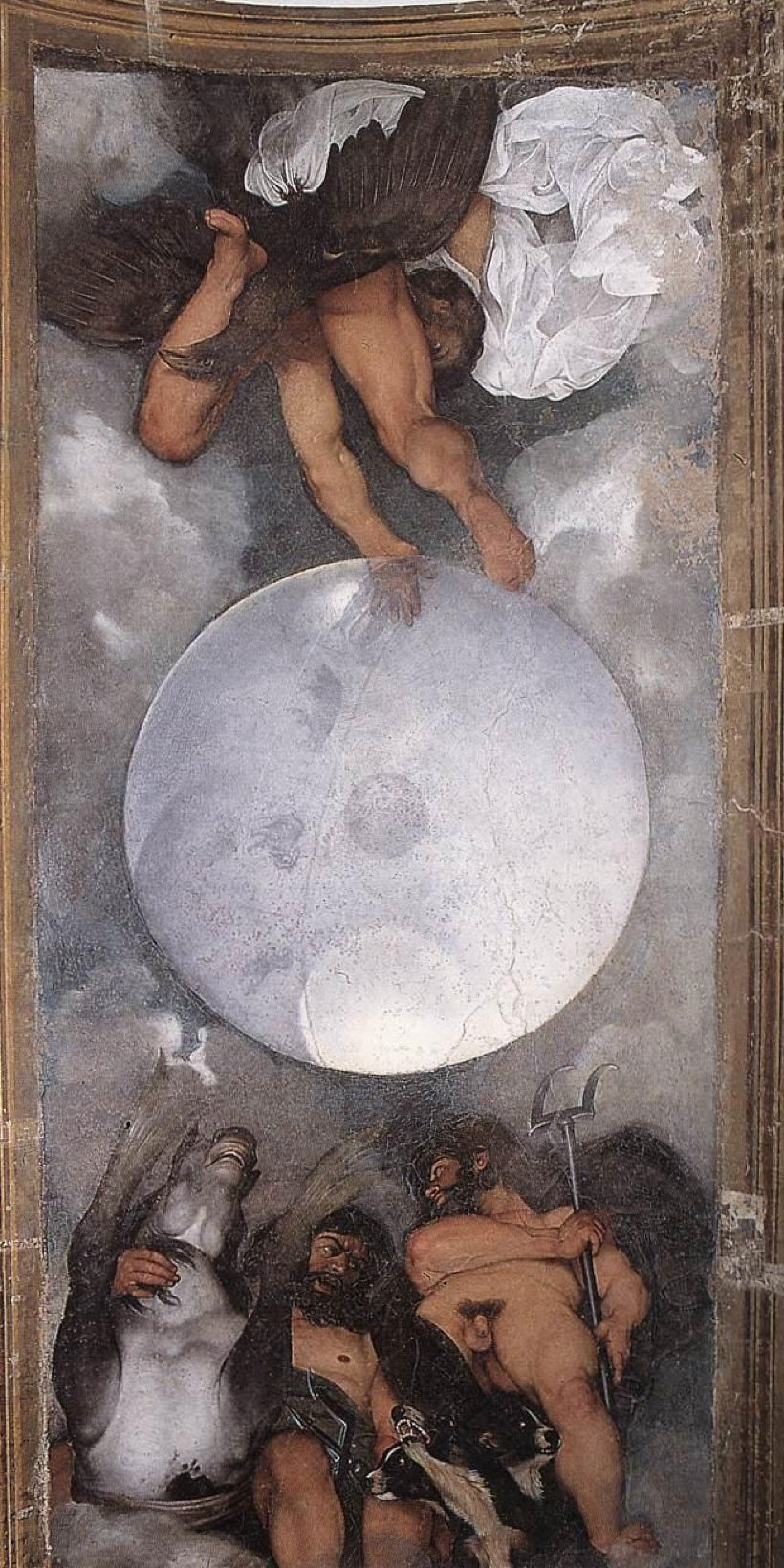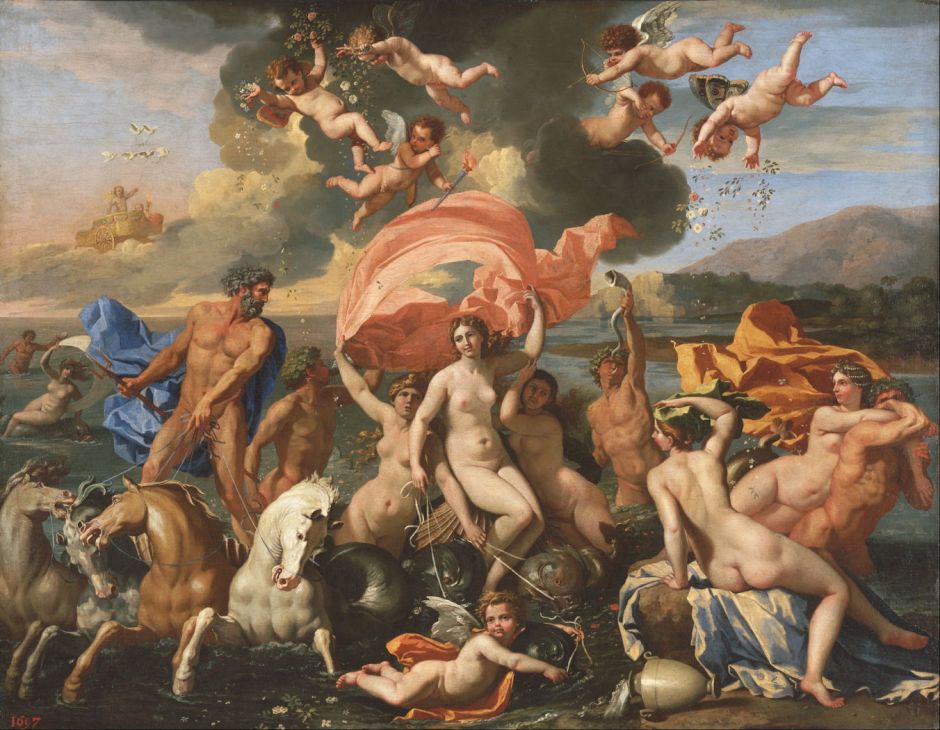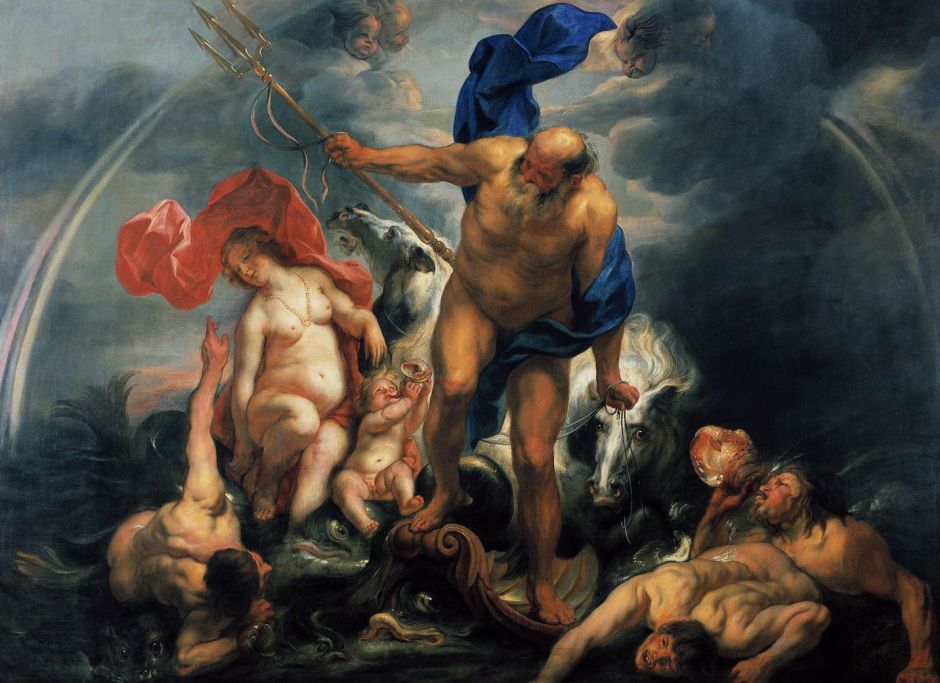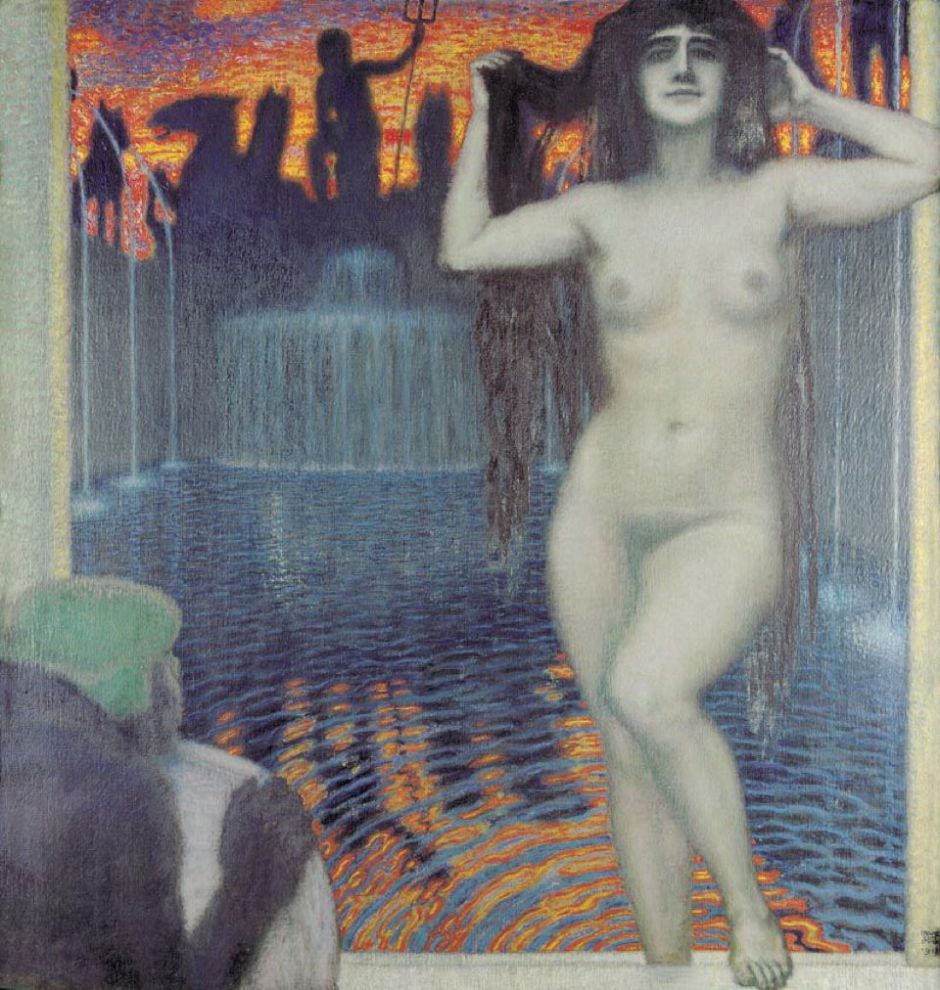Tridents are an ancient form of spear giving you three chances of striking home instead of just one. Long used for fishing, they and their relative the bident are unusual but significant symbols in paintings.
As their names imply, the trident has three prongs or tines, and the bident just two, and is far rarer. The only likely association of the bident in paintings is with the Roman god Pluto, or his Greek antecedent Plouton.

Caravaggio’s group portrait of Jupiter, Neptune and Pluto (Zeus, Poseidon, Hades) (1597-1600) only serves to confuse in their attributes: Zeus at the top has his eagle, Poseidon at the lower right is given a bident instead of the more traditional trident, but Pluto or Hades has the black-and-white Cerberus.
Neptune is generally simpler, and distinguished by his trident.

Nicolas Poussin’s The Birth of Venus (1635-36) is controversial, as there is no general agreement as to what it’s about, nor the goddess at the centre of the canvas.
One reading maintains that its current title is correct, and the central goddess is Venus, who has just been born from sea foam. To the left is clearly Neptune (Poseidon), bearing his trident astride his horses. In the far distance, riding on the clouds, Venus’ chariot is being towed towards her by swans. There are other figures to identify, but one man in the distance at the left edge looks quite similar to Neptune, and could well be his son, The Old Man of the Sea, Proteus.
An alternative interpretation is that it isn’t Venus at the centre, but the sea nymph Galatea, being drawn on a chariot of cockleshells by a school of dolphins.

Jacob Jordaens’ Neptune and Amphitrite in the Storm from 1644 includes Amphitrite, Poseidon’s wife and the Queen of the Seas. As one of the daughters of Nereus and Doris, she is a Nereid. When she sings to Poseidon her voice calms his raging storms and brings peace to the waters, and here is associated with the rainbow which might follow a squall.

One of the few works showing the story of Laomedon and the origin of Troy is thought to have been painted by Joachim von Sandrart and Girolamo Troppa in the late seventeenth century. Its close-cropped figures show Laomedon Refusing Payment to Poseidon and Apollo. The youthful Apollo holds his hand out at the left, while behind him the much older Neptune leans forward next to his trident.

Johann Ulrich Krauss tells a fragment of the more obscure story of Caenis and Neptune (before 1690), from Ovid’s Metamorphoses. As is usual, the flying Cupid indicates entirely inappropriately Neptune’s rape of Caenis, and the god is armed with his trident.

John Singleton Copley’s painting of The Return of Neptune (1754) was made after an original by Simon François Ravenet and Andrea Casali, and is a typical assembly of most of the god’s attributes and associations, including his trident.

In William Dyce’s Neptune Resigning to Britannia the Empire of the Sea (1847), the god has already passed his trident to Britannia, and his crown is now on its way, symbolising her power over the seas.
Tridents can also be wielded by others associated with water, including river gods.

Artus Wolffort’s The Four Elements was probably painted between 1600-41. On the left is Vulcan, then a bird catcher who could be intended to be Apollo. On the right, a river god holding Neptune’s trident sits next to a goddess holding a cornucopia.

Joachim Wtewael’s undated painting of The Wedding of Peleus and Thetis is great fun, with its aerial band, and numerous glimpses of deities behaving badly. In the left foreground, with his back to us, is a river god holding a trident.
Tridents also crop up in other paintings, where their significance can only be guessed.

Franz von Stuck’s Bathsheba from 1912 is an unusual retelling of an unusual Old Testament story, featuring a trident silhouetted in the background. This may rely on the association between devils and tridents that developed in more modern times, perhaps from Pluto with his bident, and is likely to be the figure of King David.
In the real world of the Roman Empire, tridents were a weapon often seen in gladiatorial combat.

In Jean-Léon Gérôme’s most spectacular Pollice Verso (1872), the defeated gladiator who is just getting the thumbs down is lying next to his blood-covered trident, which he had been wielding with the net behind it.
Of course, more modern settings are hardly likely to include weapons from mythology or Roman spectacle. They’re far more likely to be the humble pitchfork.

Jules Breton’s The Burning Haystack from 1856 shows the frenetic but co-ordinated efforts being made by the people of Courrières to extinguish a fire in one of the grainstacks. Although not designed for fighting fires, when you only have a pitchfork to hand, it’s better than nothing.

While some witches fly broomsticks, others seem to prefer pitchforks, according to Fritz Roeber’s Walpurgis Night Scene from ‘Faust’ from about 1910. The devil at the top has even gone full trident.

